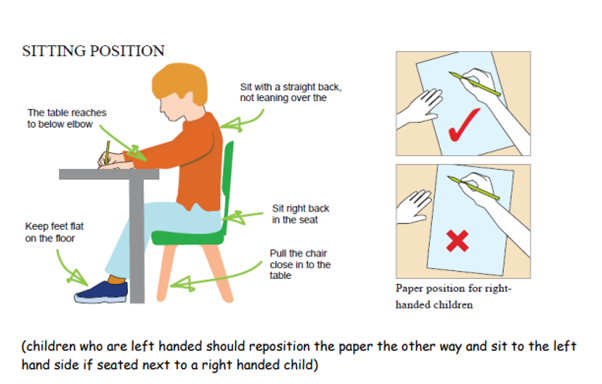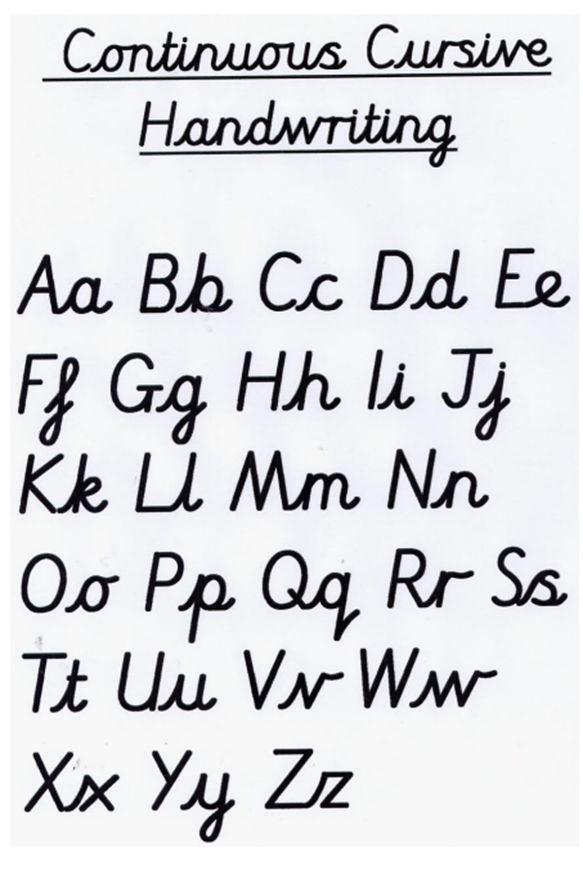5. Handwriting
Intent
We have adopted a Continuous Cursive Handwriting scheme throughout the school as Handwriting is a skill which affects written communication across the curriculum. This scheme has been realistically adopted in order to benefit children in the areas of both spelling and writing. Children must be able to write with ease, speed and legibility. Cursive handwriting teaches pupils to join letters and words as a series of flowing movements and patterns. The importance of this scheme cannot be underestimated. The skill of handwriting needs to be taught. It is not a natural skill that will grow and develop, like speaking or walking. Handwriting is a motor activity (a movement stored in the body, rather than a conscious memory).
Handwriting Aims
At Shinfield St Mary’s CE junior School, our aim in teaching handwriting are that the pupils will:
- Achieve a neat, legible style with correctly formed letters in accordance with the cursive font;
- Develop flow and speed to produce the letters automatically and in their independent writing.
- To make sure all children know the difference between lower and upper case letters.
Implementation
Children will be taught to hold a pencil correctly and adopt the correct posture when writing.

What is Continuous Cursive Handwriting?
The main features of our style of handwriting are;
- Each letter starts on the line.
- The child keeps the pencil on the paper for the whole word, giving a very fluent style.
- Letters have an entrance, exit and looped stroke.
- Capital letters and numbers are to be the same size as ascenders/tall letters. Children will be aware of a ‘magic middle line’ to ensure letters are written to the correct height. The height of the ascending or tall letters should go above the magic middle line.

Once children can form the letter correctly, they are taught to join letters using different strokes:
Horizontal exit stroke – This is a short horizontal stroke used for letters that do not end on the line. The following letters end with a horizontal stroke –
![]()
Diagonal exit stroke – This is a stroke that is used after the letter is formed to prepare for it to flow into the next letter when joined up.
![]()
When joining any letter into an ‘e’ it follows a different rule. The letter before the e must have a dipped stroke which leads into the middle of the e.
What are the benefits of Continuous Cursive Handwriting?
- The automatic style releases the brain to concentrate on other ideas i.e. spelling, grammar, syntax, style and content. Pupils should eventually develop the ability to produce letters without thinking
- The motor memory in the child’s hands and fingers help him/her to spell as each word is made up of one movement. It has been shown to improve spelling.
- It is proven to be beneficial to children with dyslexia as the continuous motor movement means the child does not have to think about the order of the letters
- There are less letter reversals when writing.
- It is attractive to the eye and aids children’s work presentation and ability to read their work back.
- The fluency established by the early use of joined up letters helps the child to express ideas in written form more readily.
Helping left-handed children to write
Left-handed children have very different needs to right-handed children when learning to write and we must remember these needs, if we expect the same high standards from these children. It is necessary to consider the following points:
· Sitting position – The left-handed child should sit on the left hand side of the table so that his/her writing hand does not interfere with the writing hand of the child next to him/her.
· Book/paper position – The book/paper should be positioned a little to his/her left and tilted slightly to the right of vertical (the opposite for right-handers). This should help the child to be able to see what he/she has written and prevent smudging.
· Orientation – To help avoid the natural tendency of left-handers to write from right to left, a green marginal line or dots (green for go) on the left side of the page can be drawn when children first start writing.
· Using the pencil – To allow better viewing of what has been written a slightly higher grip, maybe 1” – 1.5” may be necessary. As lefthanders tend to ‘dig’ into the paper, make sure that when writing with a pencil he/she is not gripping it too rigidly.
If these guidelines are followed, they should help minimise the difficulties experienced by left-handed children when writing.
How will handwriting be taught?
Year 3
There will be an initial 6 week block of daily 20 minutes handwriting practice for all Children in Year 3 where all children will be introduced to each letter group (at the rate of 1 group per week). All children by the end of the 6 weeks should have gained confidence in a continuous cursive style and begin to use this style across the curriculum in other subject areas, not just in handwriting sessions.
After this intensive block, there should be 15 minutes handwriting practice twice a week which will be linked in to phonic and spelling work. These sessions should have a high level of adult guidance and support. Children will need to be watched by an adult who has had the appropriate training to ensure that correct letter formation is established in the motor memory.
In Years 4,5 and 6, children will be expected to use cursive handwriting in all areas of the curriculum. Those children whose writing is neat and legible may be encouraged to use handwriting pens. If any child is not on track to reach these expectations, they will receive additional support through small group intervention groups
Year 3 and 4 Handwriting and work presentation
Children will be taught to:
- Use the diagonal and horizontal strokes that are needed to join letters and understand which letters, when adjacent to one another, are best left unjoined;
- increase the legibility, consistency and quality of their handwriting.
- use a ruler to draw lines, including underlining, diagrams, labelling and crossing out.
- adapt the layout of their written work to fit the intended purpose, i.e. letter presentation, play script, etc
Year 5 and 6 Handwriting and work presentation
Children will be taught to:
- write legibly, fluently and with increasing speed.
- use a ruler to draw lines, including underlining, diagrams, labelling and crossing out;
- Children learn to select the most appropriate presentation style for different writing genres;
- understand the balance between speed and legibility which is dependent on the purpose of the writing: the product or the final draft of a piece of writing.
Impact
By year 6 children will use cursive handwriting using flowing movements and patterns. This handwriting should be demonstrated in all writing across the curriculum. Writing should be fluid in style to allow children to apply their energy into the content of their writing as opposed to the formation of the letters themselves.
